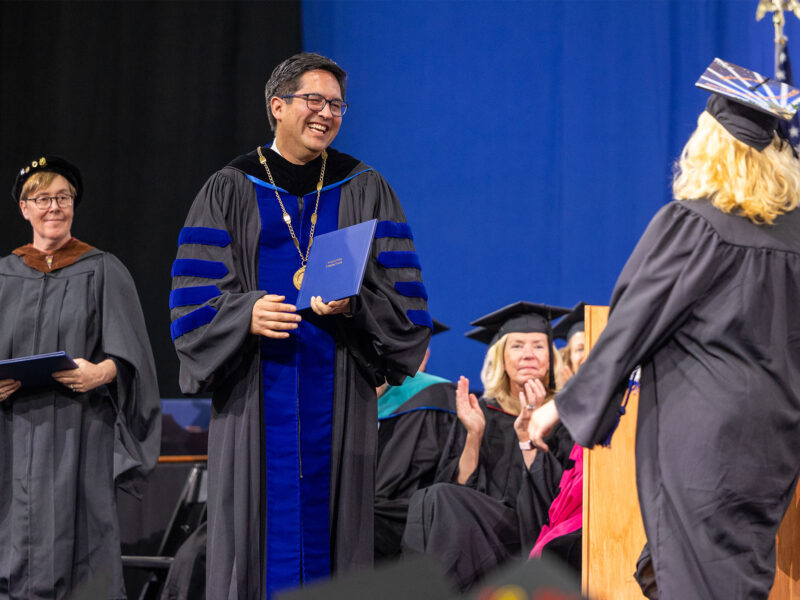Champlain’s Already Stellar STARS Sustainability Rating Improves!

A new report shows how Champlain is advancing social justice and responsible environmental stewardship in our classrooms, on our campus, and in our communities.
Champlain College is located in Burlington, Vermont: a town known for its views, its reputation as the #1 college town in the United States (Travel + Leisure), and for being the first ever U.S. city to run completely on green energy. Burlington residents take their status as climate leaders very seriously. Up on our hilltop campus, Champlain College is doing our part to live up to our hometown’s historical sustainability standards.
This year, Champlain College has been awarded a phenomenal silver rating from the AASHE STARS Program. The Sustainability Tracking, Assessment & Rating System (STARS) is a self-rating system used by institutions across the country to measure their sustainability performance. The program provides a clear framework for institutions to keep track of their green efforts and follow their service and sustainability improvements year after year.
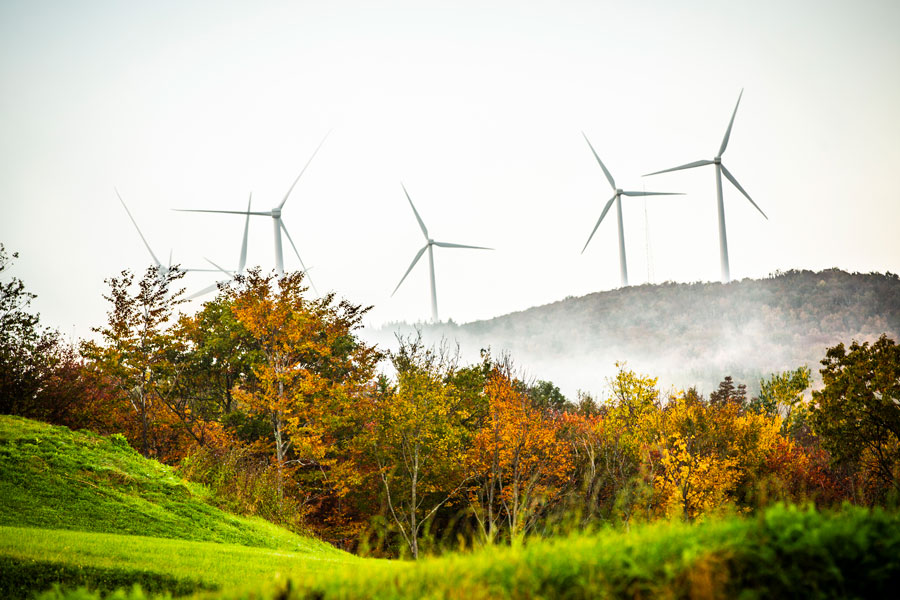
Photo by Logan Potvin ’19.
“STARS provides a measuring stick that gives us a sense of where we are, and how we stack up against peer institutions,” says Dr. Christina Erickson, the Learning Director of Champlain’s Center for Service & Sustainability, and leader of the STARS data collection. Erickson put in hours and hours of work to collect the information needed to get a complete picture of Champlain’s environmental progress. Erickson first completed data collection for STARS in 2016, and then again in 2019.
Between those three years, Champlain’s STARS total sustainability score went up. “We bumped up five percentage points, which was a significant increase,” reports Erickson.
In 2019, Champlain scored highest in areas that focused on Water, Campus Engagement, Diversity & Affordability, Transportation, Public Engagement, Coordination & Planning, and Air & Climate. The College also saw improvements in categories such as Curriculum, Energy, and Well-being & Work.
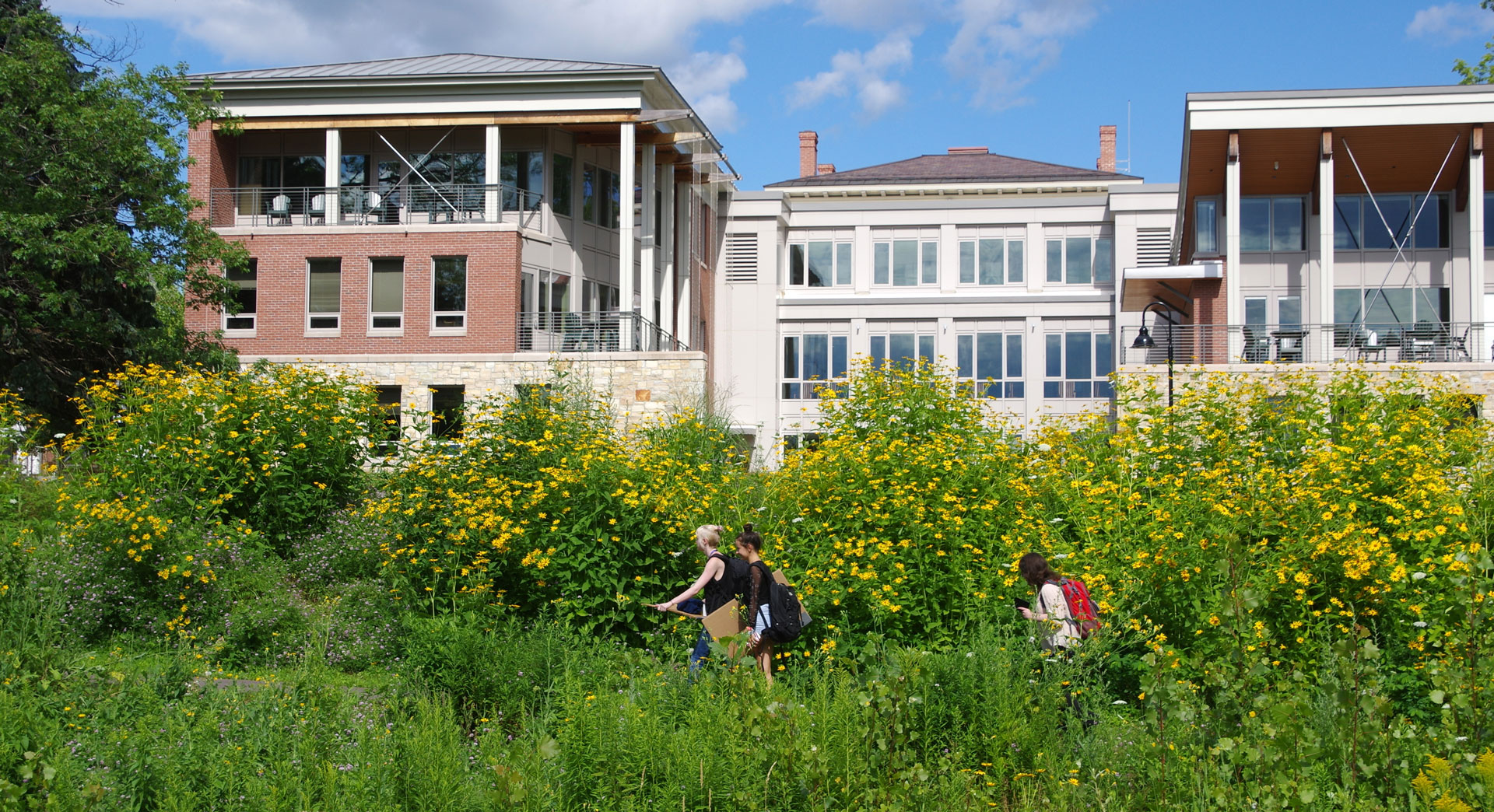
Compared to peer institutions in the 2019 STARS Sustainable Campus Index, Champlain was singled out for our water conservation efforts. “Kudos to the Champlain College Physical Plant teams,” says Erickson. “They improved our water usage infrastructure by installing low-flow shower heads, low-flow toilets, and other water conservation measures, and made a significant difference.” Because of these changes, Champlain students use less water per person.
A point of pride for Erickson is our positive Air & Climate score. “That category covers how many carbon emissions we emit.” Erickson notes that in our current climate crisis, keeping track of our emissions as a campus is crucial in reducing our carbon footprint and overall climate impact. It’s an issue that has been important to Champlain for years. As Erickson explains, “We’ve kept track of annual greenhouse gas inventories for the last decade and, over time, we have done extremely well in our emissions per square foot and emissions per student. In fact, we outperformed other peer institutions. We use our physical campus very efficiently.”

Photo by Logan Potvin ’19.
A final highlight was Champlain’s Diversity & Affordability score. As Erickson points out, sustainability includes more than just the environmental aspect most people associate it with.
“STARS allows me to teach folks, and in some cases remind them, that sustainability is not just about the environment. The full definition of sustainability includes social justice and equity,” says Erickson. “There’s a section in the sustainability track of STARS about pay equity, which includes diversity, inclusion, and affordability efforts. This is an area where we did very well. We have put a lot of time and effort into the areas of social justice and equity as a campus community.”
Erickson and her team worked hard to increase Champlain’s score by five points, and because of their efforts, our campus has continued to develop as a sustainable and positive community.
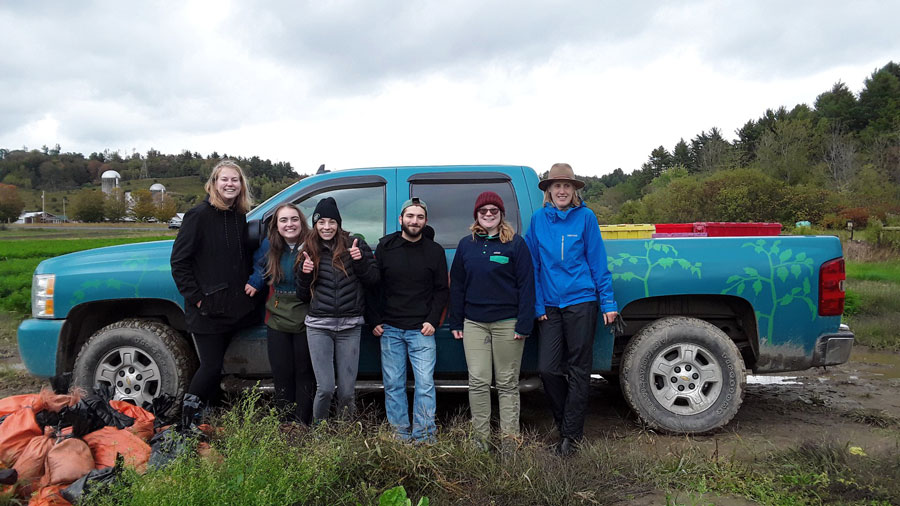
“The untold story is that Champlain has had some great success in sustainability work over the last 15 years,” explains Erickson.
The yearly STARS data collection, however, is no small task. “It’s a huge amount of work,” says Erickson. “The system itself includes 30 types of topics for which you have to collect information. It involves a huge amount of data collection and analysis.”
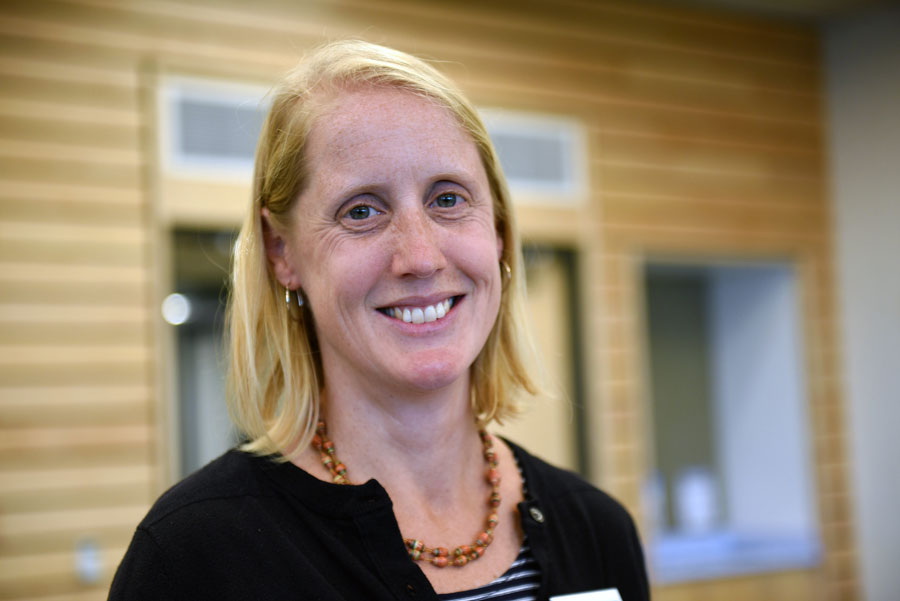
In 2016, Erickson started much of the research herself from the ground up. For the 2019 report, Erickson enlisted the help of students in Champlain College’s Environmental Studies & Policy major—a major uniquely focused on legislative and action-based environmental work. This sort of documentation and research gave students an opportunity to use what they had learned in the classroom to make real, lasting effects on their campus community. Students in professor Val Esposito’s course, Place-based Environmental Study, helped Erickson evaluate and improve upon multiple STARS categories.
“As part of a service-learning project for their class, the students worked on portions of the STARS project,” says Erickson. “They helped create an analysis of how many courses contain sustainability-related content, and they worked to improve our e-waste systems and processes.” Some students even worked on individual professional development projects related to STARS. “A student presented about fair trade at a staff council meeting, for example,” Erickson explains. “Student engagement and campus engagement have been really strong.”
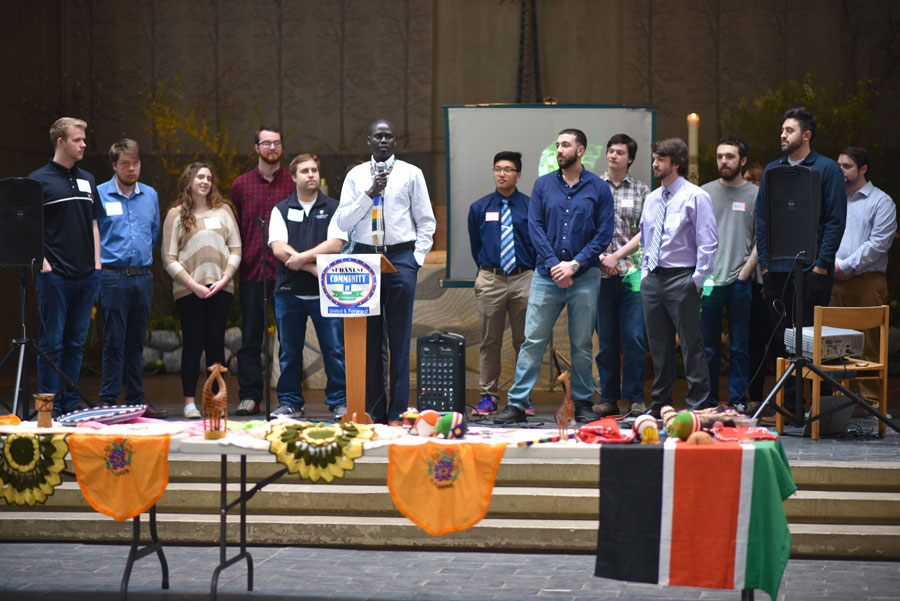
Now, after the success of our 2019 STARS report, Champlain is moving into the future. This fall, even more students are getting involved with STARS. Champlain’s Ecological Economics class will be working with Erickson and the College on a service-learning project. The students will help Erickson develop and roll out Champlain’s next strategic sustainability plan, which will help the college grow our sustainability efforts from 2020 to 2025, and improve our STARS score even more.
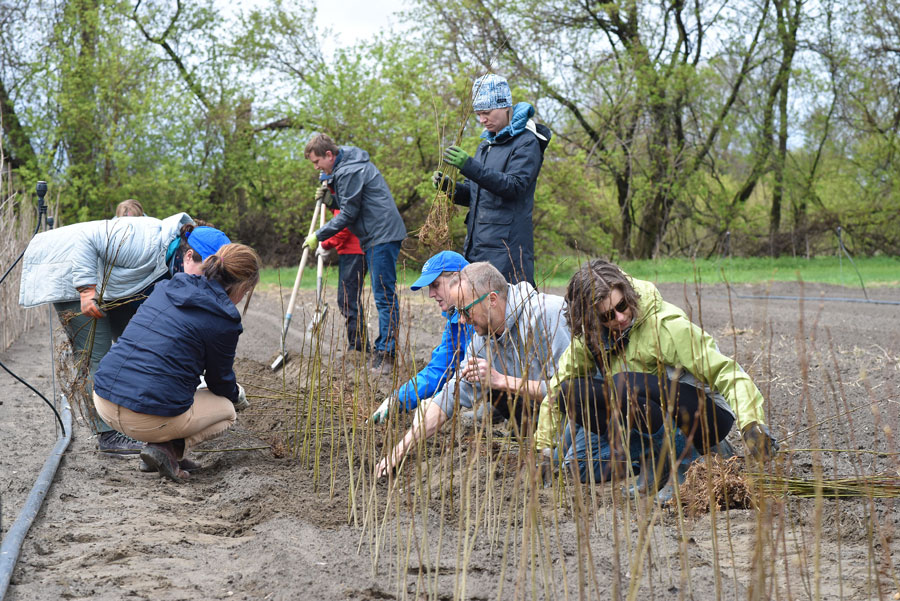
“We will certainly use the STARS framework,” says Erickson. “How do we get to gold? What are the areas where we’ll really need to dig deeper into or broaden ourselves? I’m excited to see how our students will help move Champlain forward.”
Author
More Inside The View
Ideas
From the minds of our students, faculty, and alumni.
News
The latest from Champlain College.
People
Champlain is more than just a place; it's a community.
Places
On campus, in Burlington, and beyond.
Events
Check out our many campus events and get involved! Refine your search by using the filters or monthly view options.
